 November 2013
November 2013Placard, Ablagerung 2013
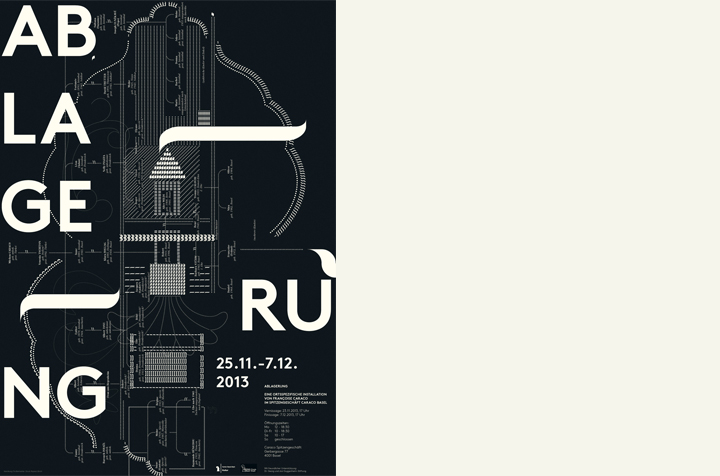
Placard for the exhibition, Ablagerung, in the lace shop Caraco Basel, Design Trix Barmettler, 2013
 November 2013
November 2013Deposits
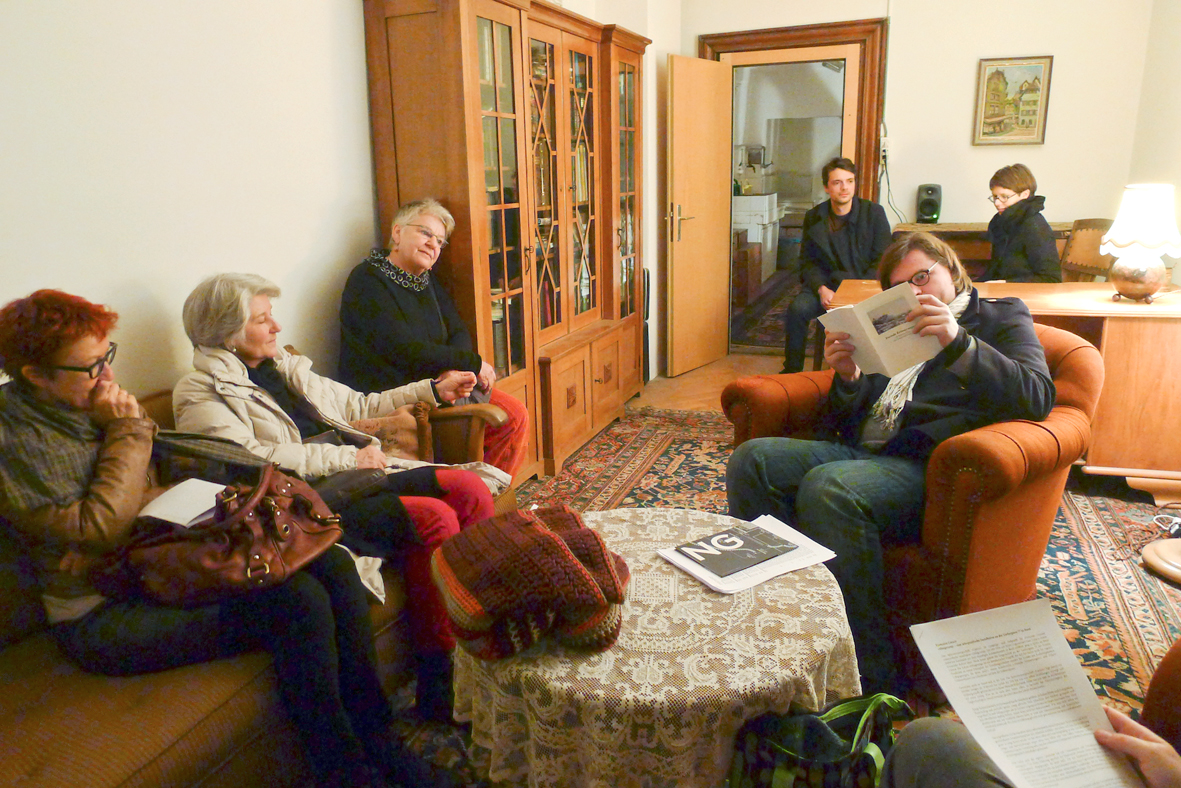
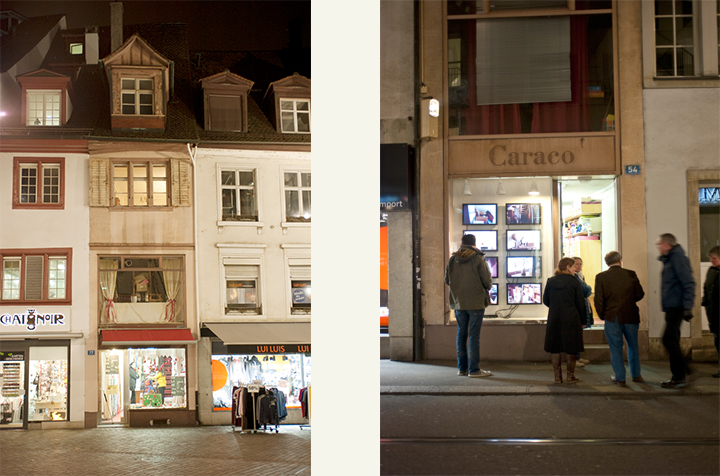
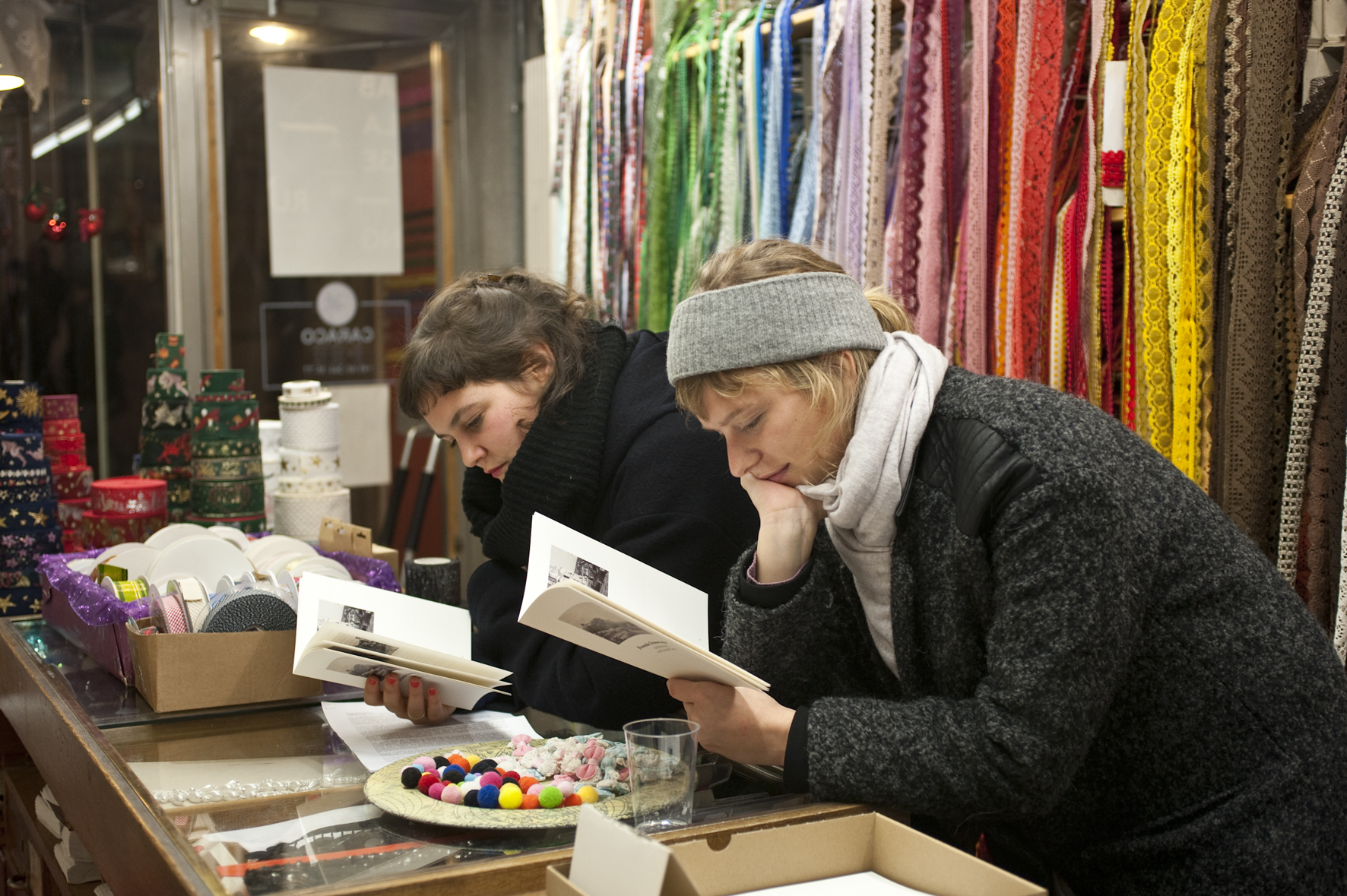

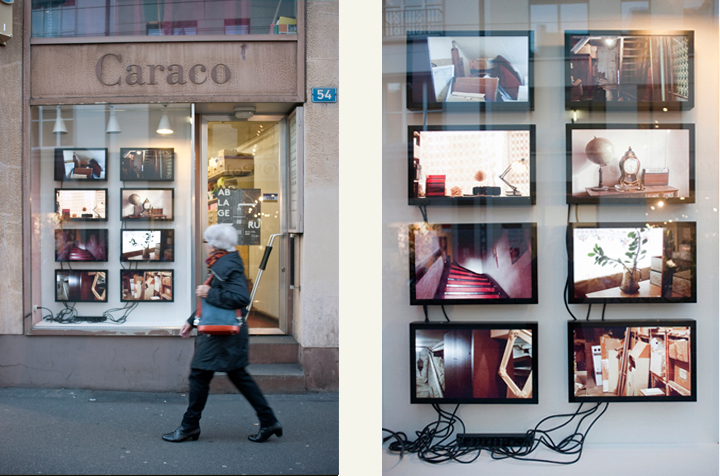
Site specific installation, audio work; Begegnungen, die keine sind, in the lace shop Caraco Basel, 2013
The lace shop Caraco Basel, 2013
Site specific installation, Reisebericht: Fremde Erinnerungen, in the lace shop Caraco Basel, 2013
Site specific installation, Ablagerung, in the lace shop Caraco Basel, 2013
Site specific installation, Hinterräume, 8 Videos in the exhibition, Ablagerung, in the lace shop Caraco Basel, 2013
Audio work; Begegnungen, die keine sind, 2013
Ablagerung // Deposits (2013)
Site-specific installation in the ‘Caraco’ lace shop.
Audio work: Begegnungen, die keine sind , 3' 12" in loop, 2013
Travel journal: Fremde Erinnerungen (Borrowed Memories), laser-print, 2013
Videos displayed on eight monitors, Hinterräume (Backrooms), HD 16:9, varying playback lengths in loop, 2013
The lace shop ‘Caraco’ is the point of departure and the endpoint for Françoise Caraco’s site-specific installation Ablagerung. Opened in 1914 in Basle by the artist’s great-grandfather Isaac Caraco, a Jewish merchant from what was then Constantinople, the business was later taken over by her grandfather Robert. Today the property at Gerbergasse 77 still belongs to the Caraco family. The work Ablagerung is an artistic intervention involving a search by Françoise Caraco for her own history, beginning at a site in her family tree. The work consists of audio fragments (Begegnungen, die keine sind), a travel journal (Fremde Erinnerungen) and videos (Hinterräume) in the display windows on the Falknerstrasse side of the building.
History plays itself out in space and in time. The ‘Caraco’ lace shop is eloquent testimony to this fact. Whilst the scaffold of time creates stories as if almost by itself, and establishes an order, in the same breath it commands defiance. Everything that was and is appears here in one fell swoop. That which is, is open on all sides; the synchronicity of non-synchronicity prevails – a condition referred to in the eight videos of the work Hinterräume.
The artist has opened a number of cardboard boxes containing archive material, revealing letters and photographs, sales slips and valuable laces. Many of the other boxes, however, remain stacked an unopened. They are deposits[i2] , reaching out to today as signs of times gone by. The fact that their surfaces are dusty does nothing to detract from their meaningfulness. Just as one can never entirely gauge oneself, and then only by recounting, so all genealogical research and history writing includes gaps. Each time something is found out, somewhere else a new and unknown domain appears.
The unopened archive boxes serve as proxies for this unknowingness. Lives and historical correlations can not be told mimetically – if merely because it would entail any recital lasting as long as the life itself or the sequence of events per se. It is only the omissions and the emphasises that show something about one’s self, or of former times. The immediate connotation of Françoise Caraco’s installation is that in this context the narrative configuration is a possible given prerequisite for verisimilitude.
Each search for a personal history must face failings and the unuttered. These experiences find expression in the travel journal Fremde Erinnerungen and the audio fragment Begegnungen, die keine sind. For the story of her journey the artist travelled to Turkey with a collection of family photos from 1935 taken in her great-grandfather’s birthplace Ortaköy. The seemingly self-evident nature of the plan to match the notions evoked by the photos with the experiences of visiting the place where they originated from dissolves in Ortaköy. The confrontation turns the seeker into a visitor, obliged to recognise that there are alien aspects to her story that will remain precisely so: alien.
A similar force becomes apparent in the attempt to converse with her relations. In Begegnungen, die keine sind scraps of correspondence left behind by her great-grandfather and her grandfather are interwoven with the hesitant exchanges between living family members.
The fragmentary character of the audio recordings is a reference to the lacunae without which a story cannot function. Nevertheless, Françoise Caraco’s installation abstains from utilizing the true force of story telling, namely to resolve disparities in experiences and to make junctures and misunderstandings seem more explicable. By this means the search for her own story also stands for the general inability that codetermines every glance backwards, and at one’s self.
It is not a coherent narrative that sustains the correlations in Françoise Caracos work Ablagerung, intrinsically rather the rooms of the ‘Caraco’ lace shop – as a junction in history.
Text: Alain Gloor
 November 2013
November 2013Reisebericht, Fremde Erinnerungen, 2013
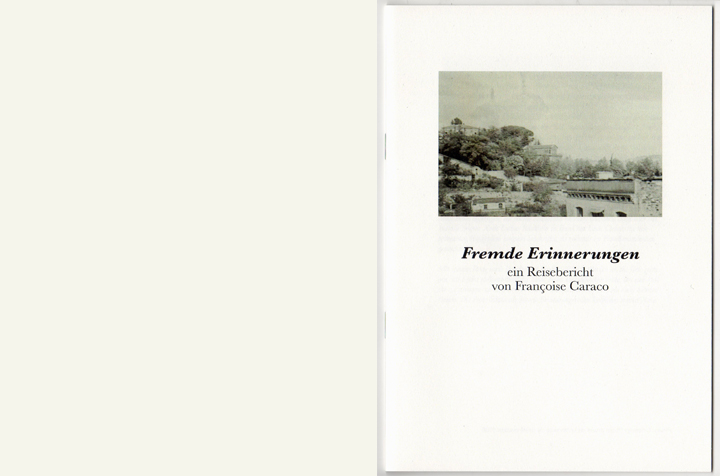

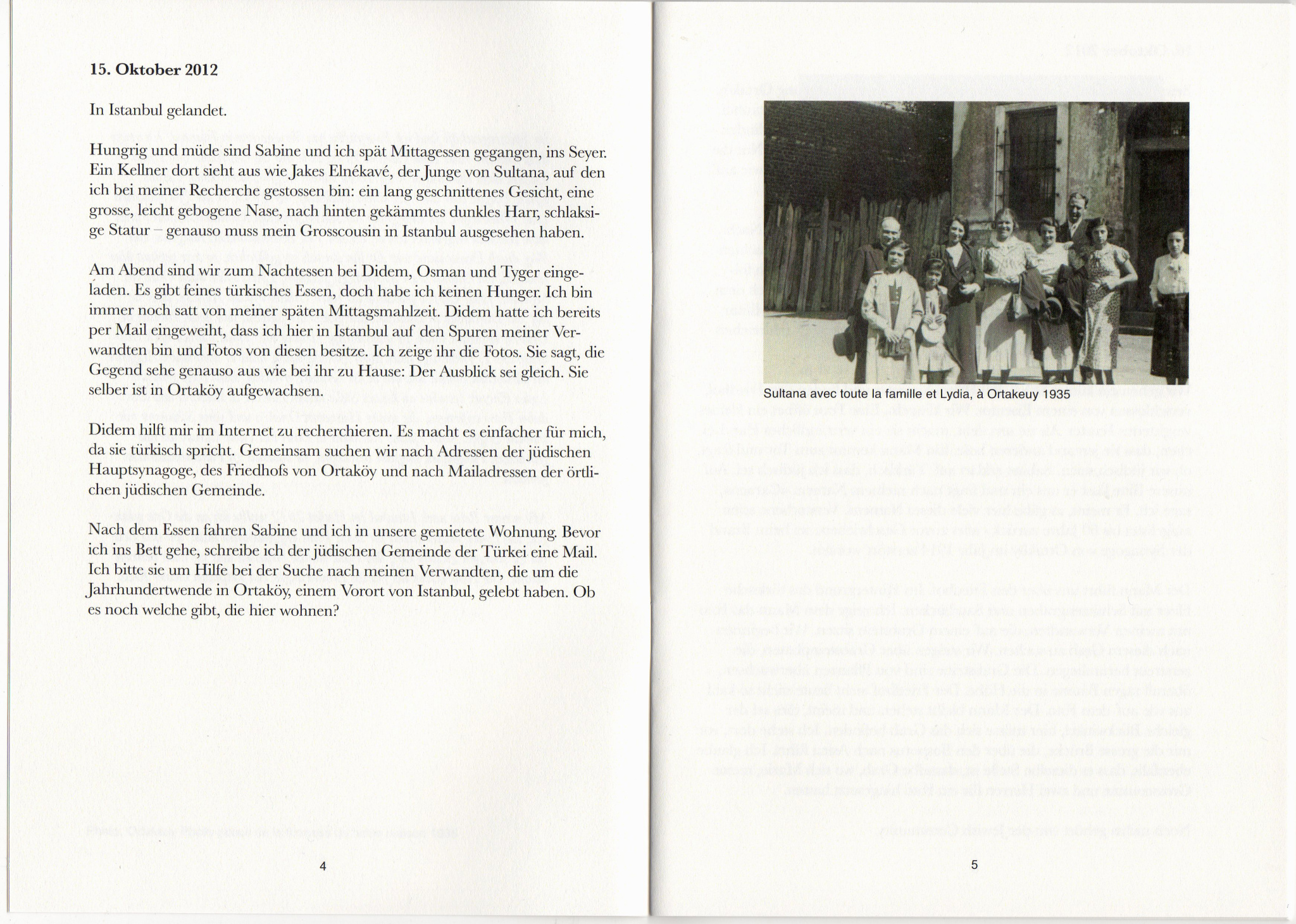
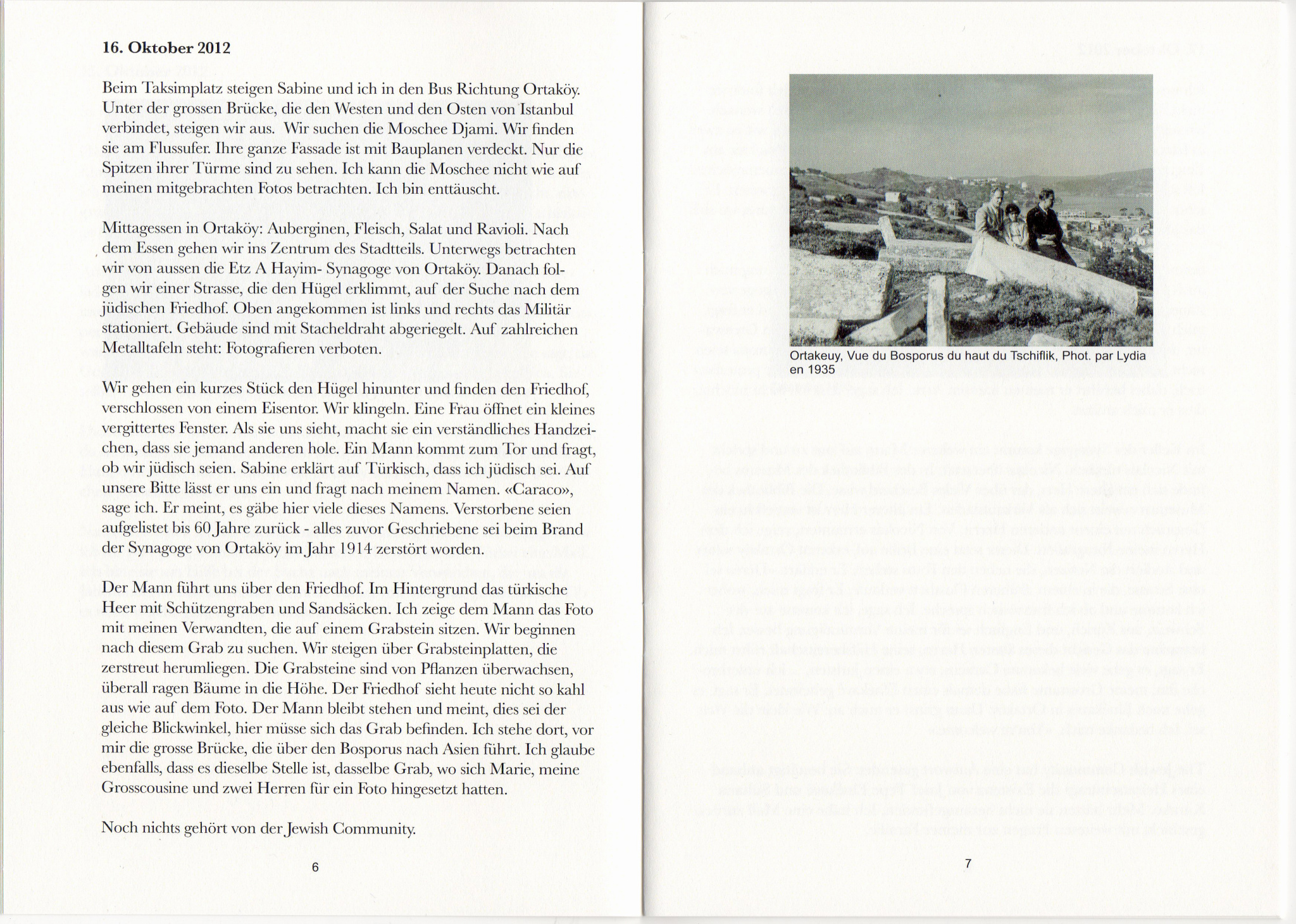
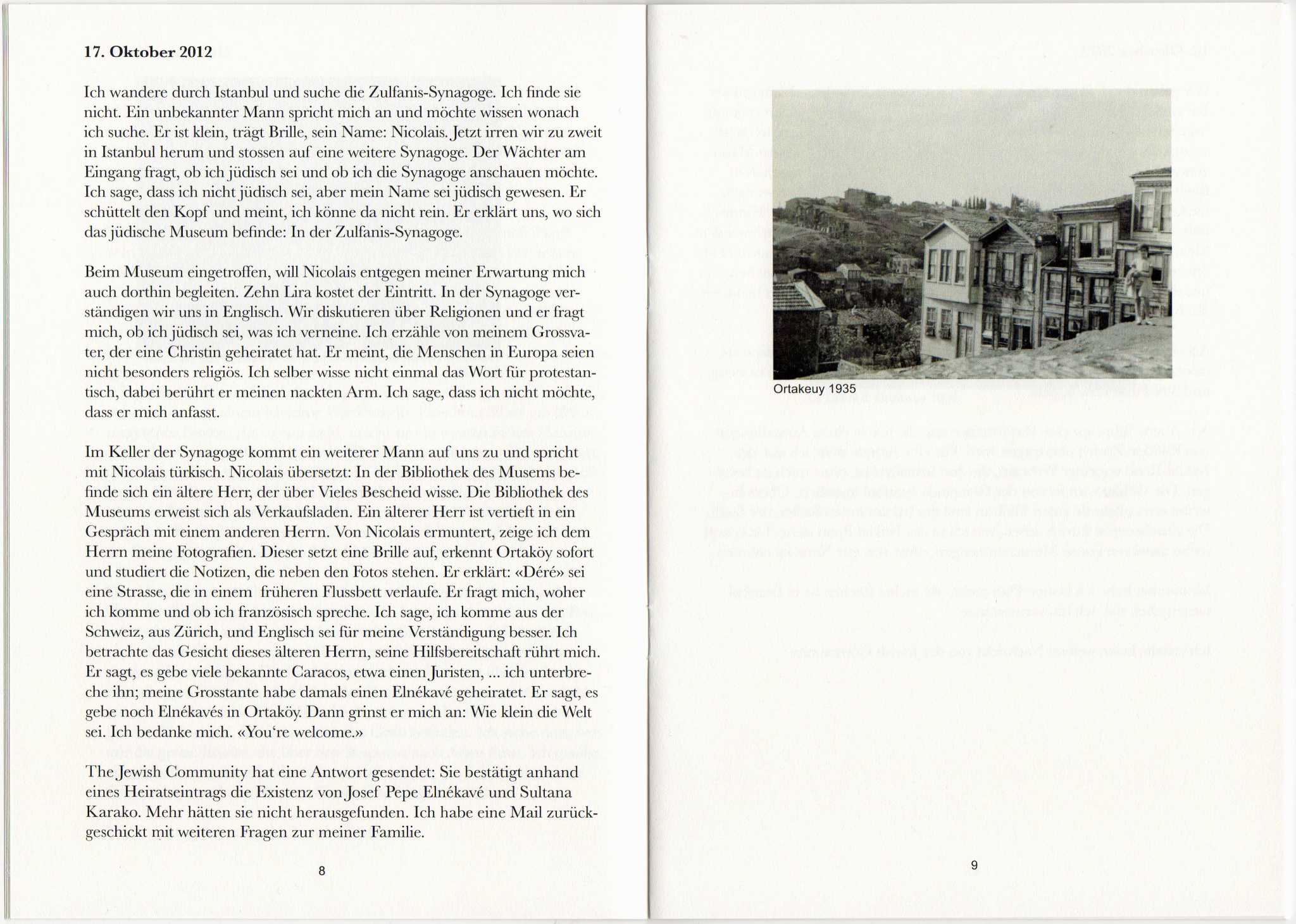
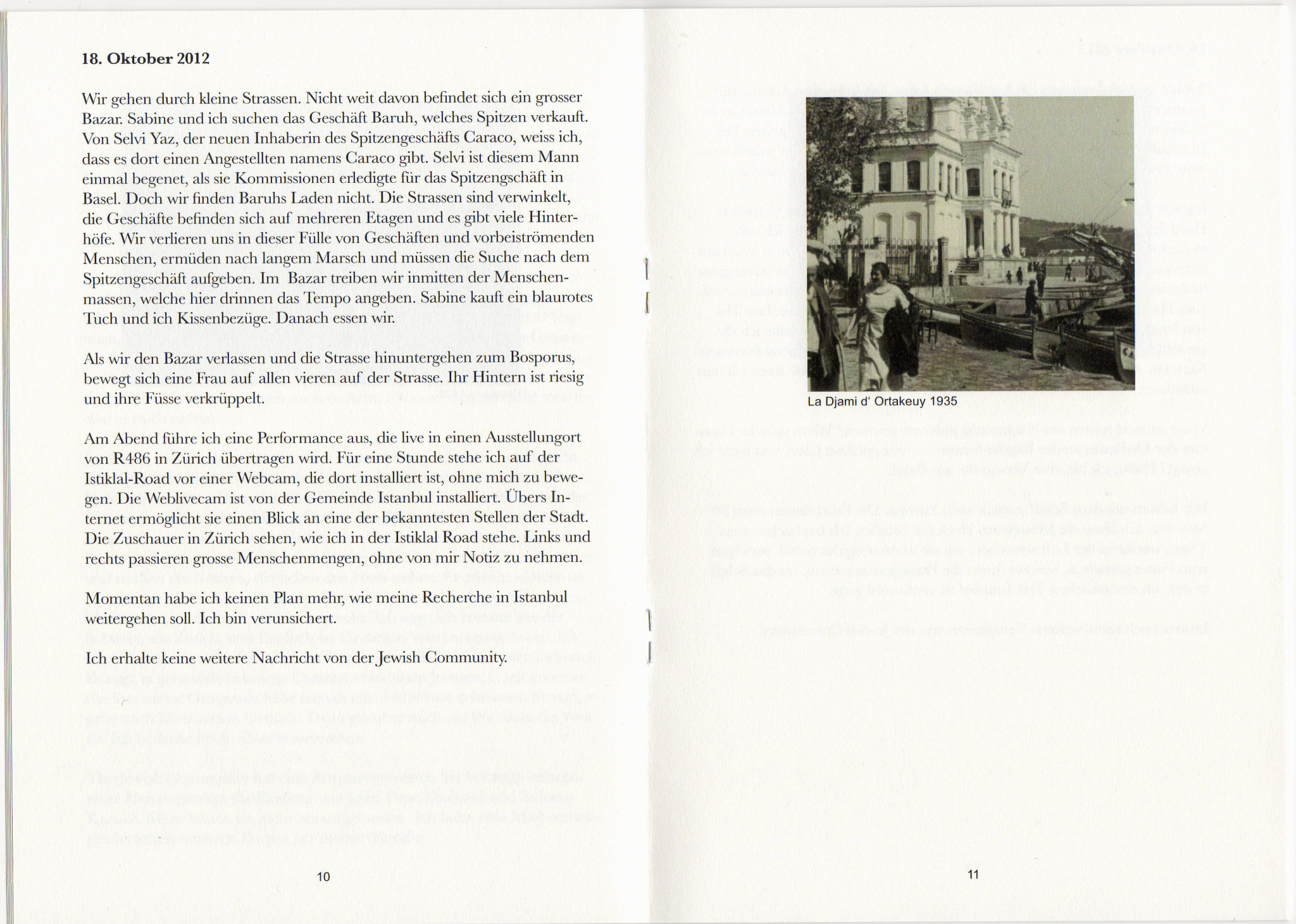
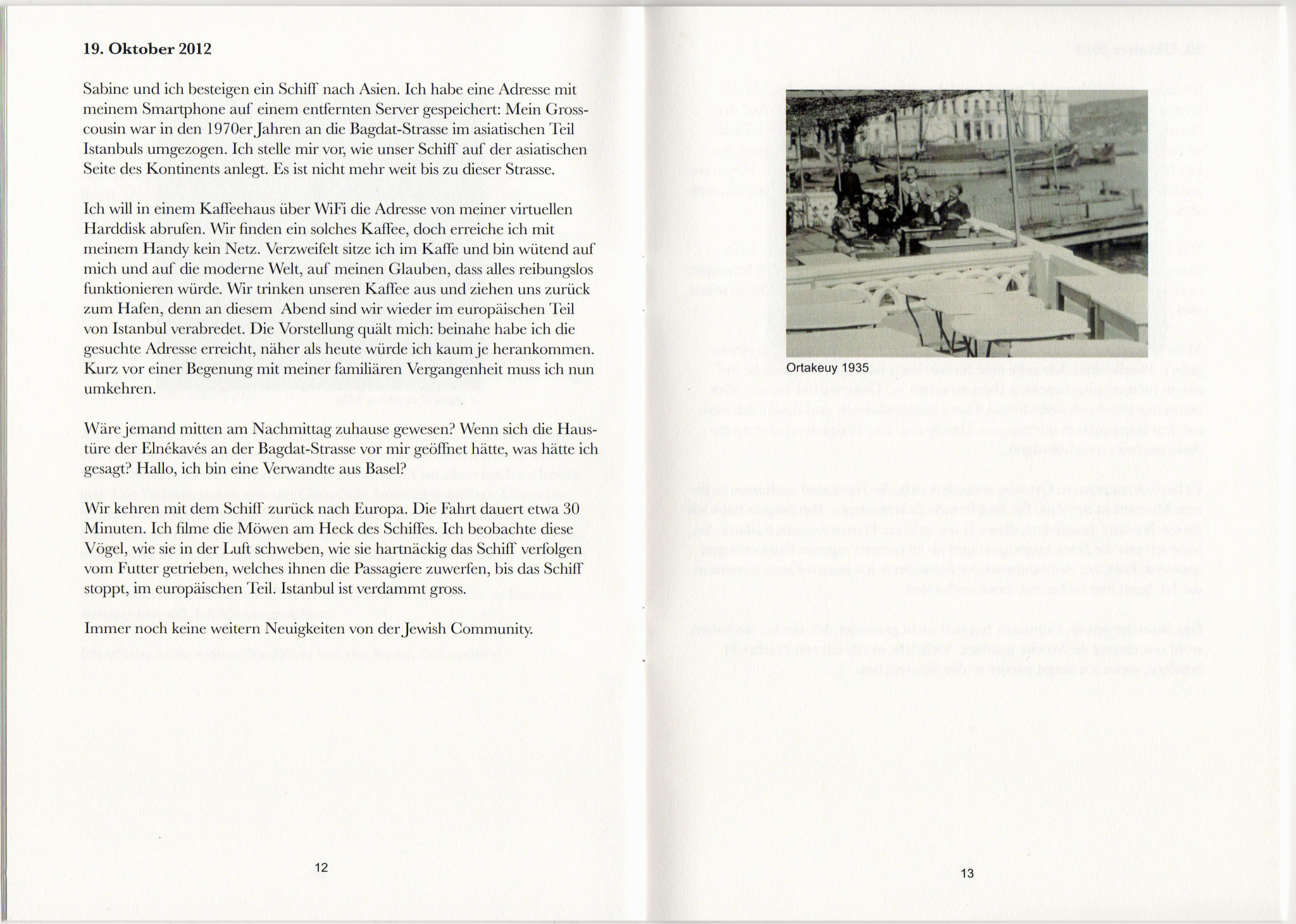
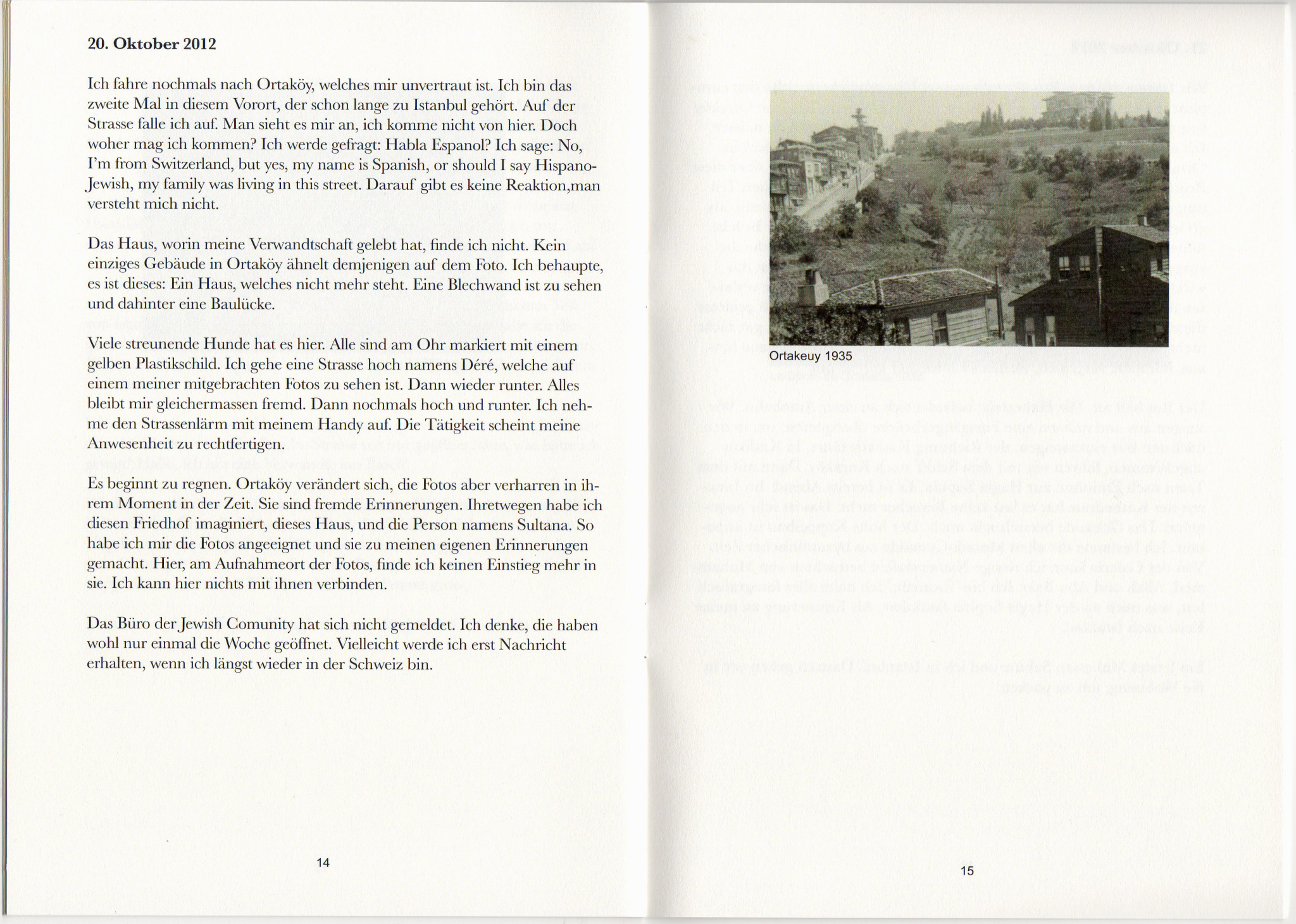

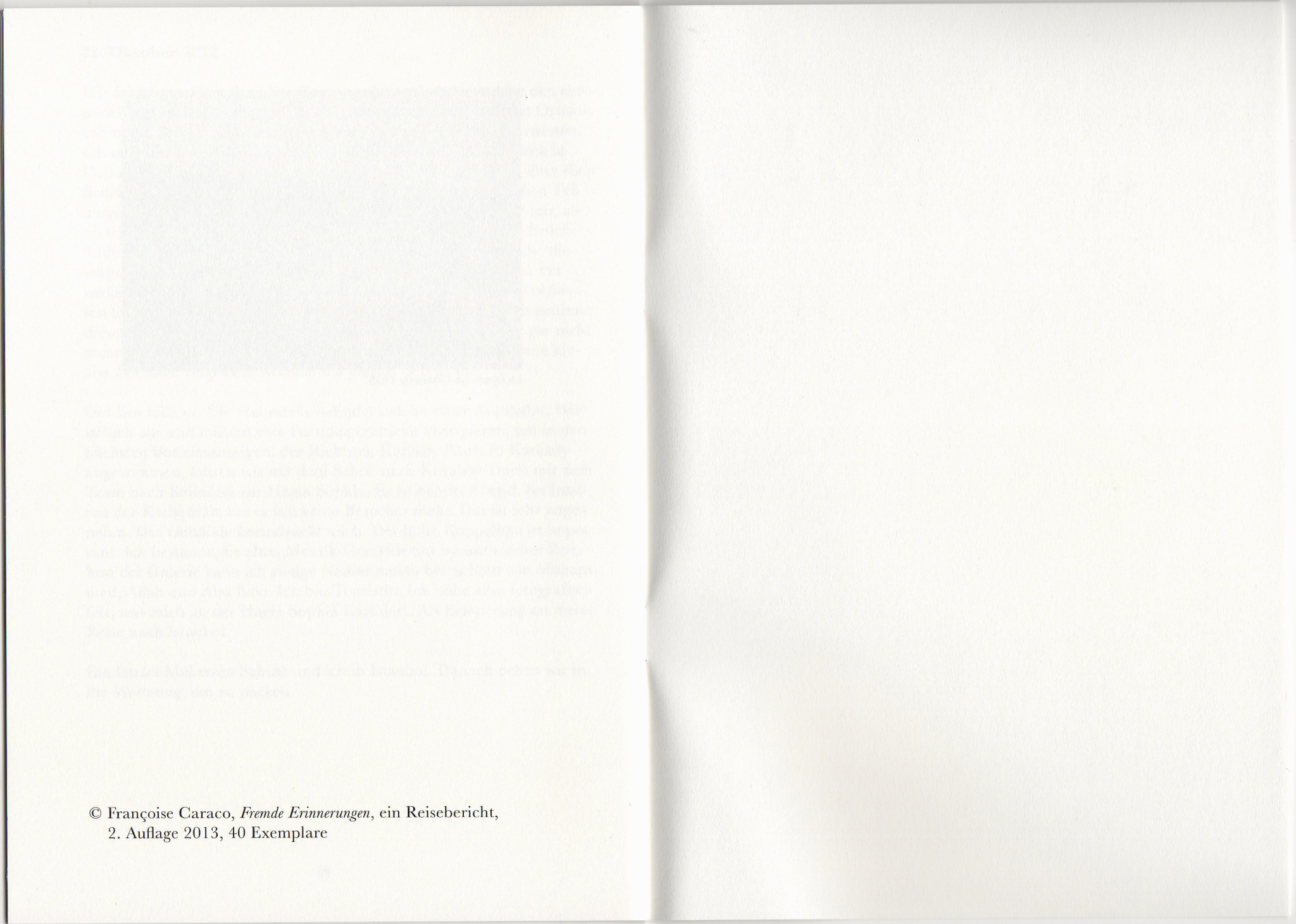
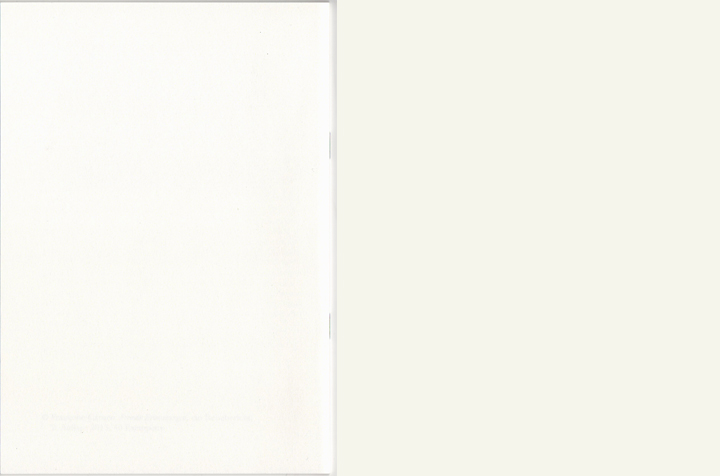
Travelogue A5: Fremde Erinnerungen, Laserprint, 2013
Travelogue A5: Fremde Erinnerungen, Laserprint, 2013
Travelogue A5: Fremde Erinnerungen, Laserprint, 2013
Travelogue A5: Fremde Erinnerungen, Laserprint, 2013
Travelogue A5: Fremde Erinnerungen, Laserprint, 2013
Travelogue A5: Fremde Erinnerungen, Laserprint, 2013
Travelogue A5: Fremde Erinnerungen, Laserprint, 2013
Travelogue A5: Fremde Erinnerungen, Laserprint, 2013
Travelogue A5: Fremde Erinnerungen, Laserprint, 2013
Travelogue A5: Fremde Erinnerungen, Laserprint, 2013